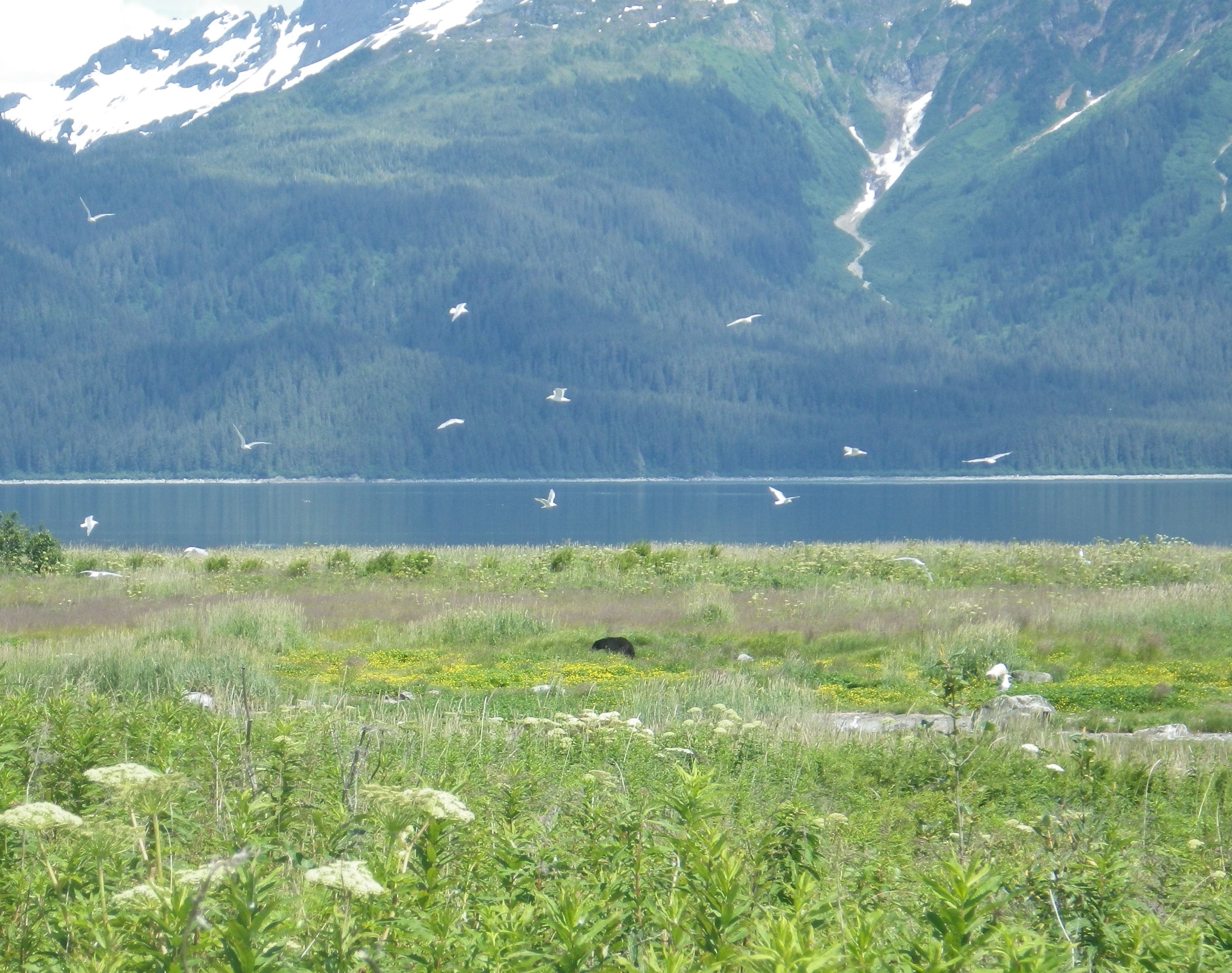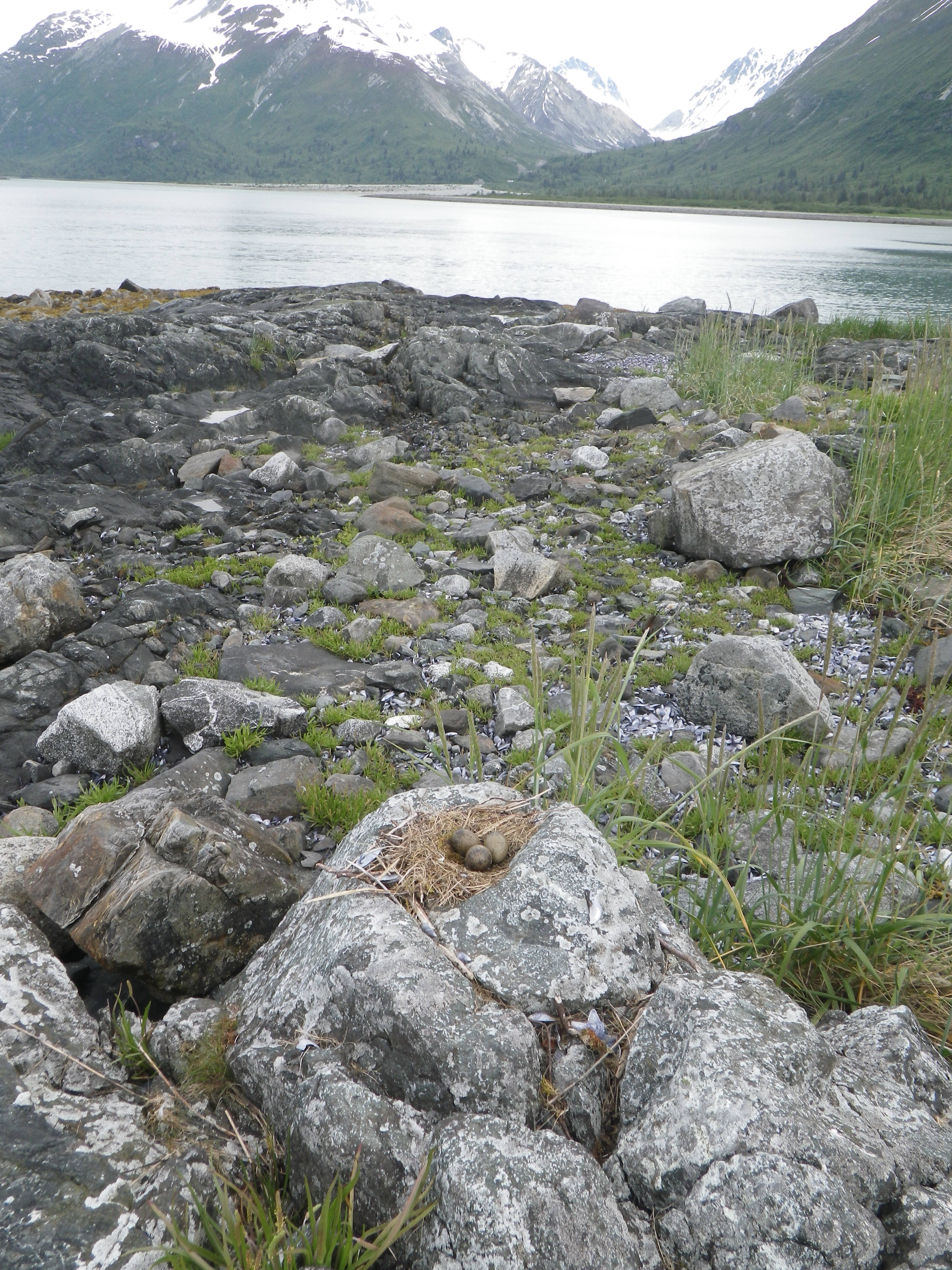
This black bear was observed eating eggs at a gull colony in Glacier Bay, June 22, 2016. Although many islands offer refuge to nesting birds from terrestrial predators, bears are willing and able to swim to islands close to the mainland, especially for a bounty of eggs and berries. NPS photo
Nesting success of gulls and terns may be influenced by many factors including food availability, which in turn may be influenced by air temperature, precipitation, ocean temperature, and more. Low food availability limits the amount of energy gulls can put into nesting effort and can increase levels of egg predation from other birds. Recent anomalies in sea surface temperature in the North Pacific may have contributed to seabird die-offs observed during the winter of 2015-2016 in Alaska and may also be influencing seabird breeding success this summer in Glacier Bay. The good news is that many seabirds live up to 20 years and so each bird only needs to successfully reproduce once to maintain their populations.

Three eggs is a complete clutch for many species of gulls and terns. If birds lose eggs to predators or flooding, many will continue to lay eggs until a complete clutch is achieved. This Mew Gull nest contained one the few complete clutches observed during bird nest surveys in Glacier Bay in early June, 2016. NPS photo
